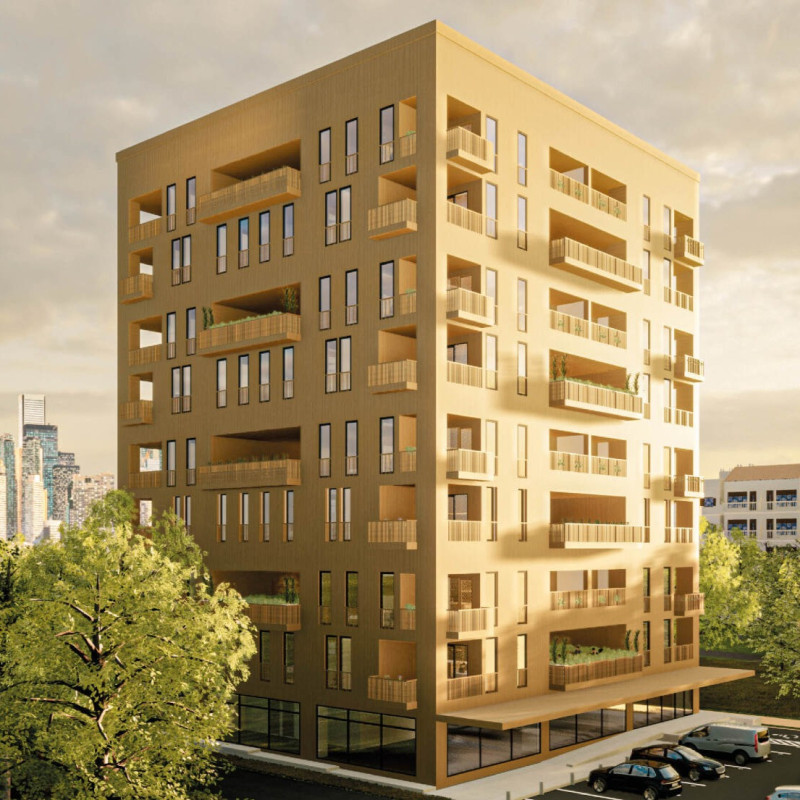5 key facts about this project
The Berlin Revival project addresses the need for affordable housing by transforming abandoned areas into functional living spaces that encourage community interaction. Located in the heart of Berlin, the design focuses on creating a welcoming environment for residents while respecting the historical context of the city. The overall concept is built around a modular framework that emphasizes flexibility, sustainability, and social connection.
Modular Framework
The design centers on a modular approach that allows for various living arrangements. The base structure has been simplified to a skeletal form, complemented by additional volumes that improve circulation within the building. This arrangement optimizes space and ensures ample natural light and ventilation for the residents.
Community-Oriented Spaces
Modules are stacked in a staggered manner, promoting airflow between floors and helping to reduce feelings of isolation among residents. Each living unit is designed to cater to different household sizes, ranging from single occupants to larger families. The inclusion of shared spaces encourages social engagement and strengthens community bonds while meeting a variety of housing needs.
Integration of Green Features
Garden spaces are integrated into the design, allowing residents to participate in urban gardening and share activities that foster cooperation. These green areas serve as both personal and communal resources, enhancing the quality of life. They also contribute to sustainability by giving residents the chance to grow their own food, promoting healthier living.
Structural Components
The project features a skeleton frame supported by glulam beams, prefabricated structural panels, and concrete supports. This choice of materials ensures strength and durability while allowing for quicker construction. By minimizing waste and enhancing efficiency, the design reflects a commitment to sustainability. The careful selection of these structural components balances functionality with a visually appealing environment.



















































